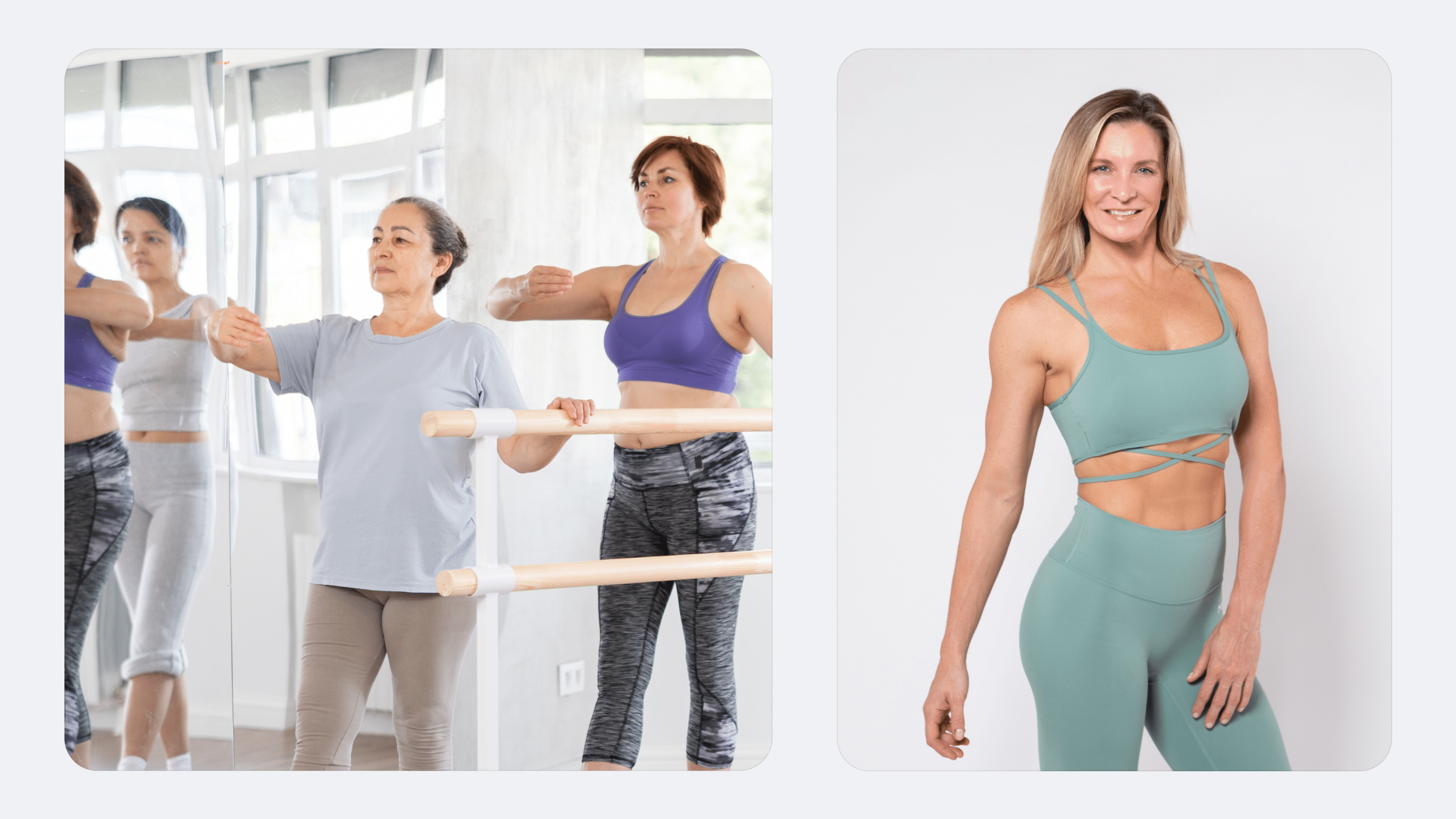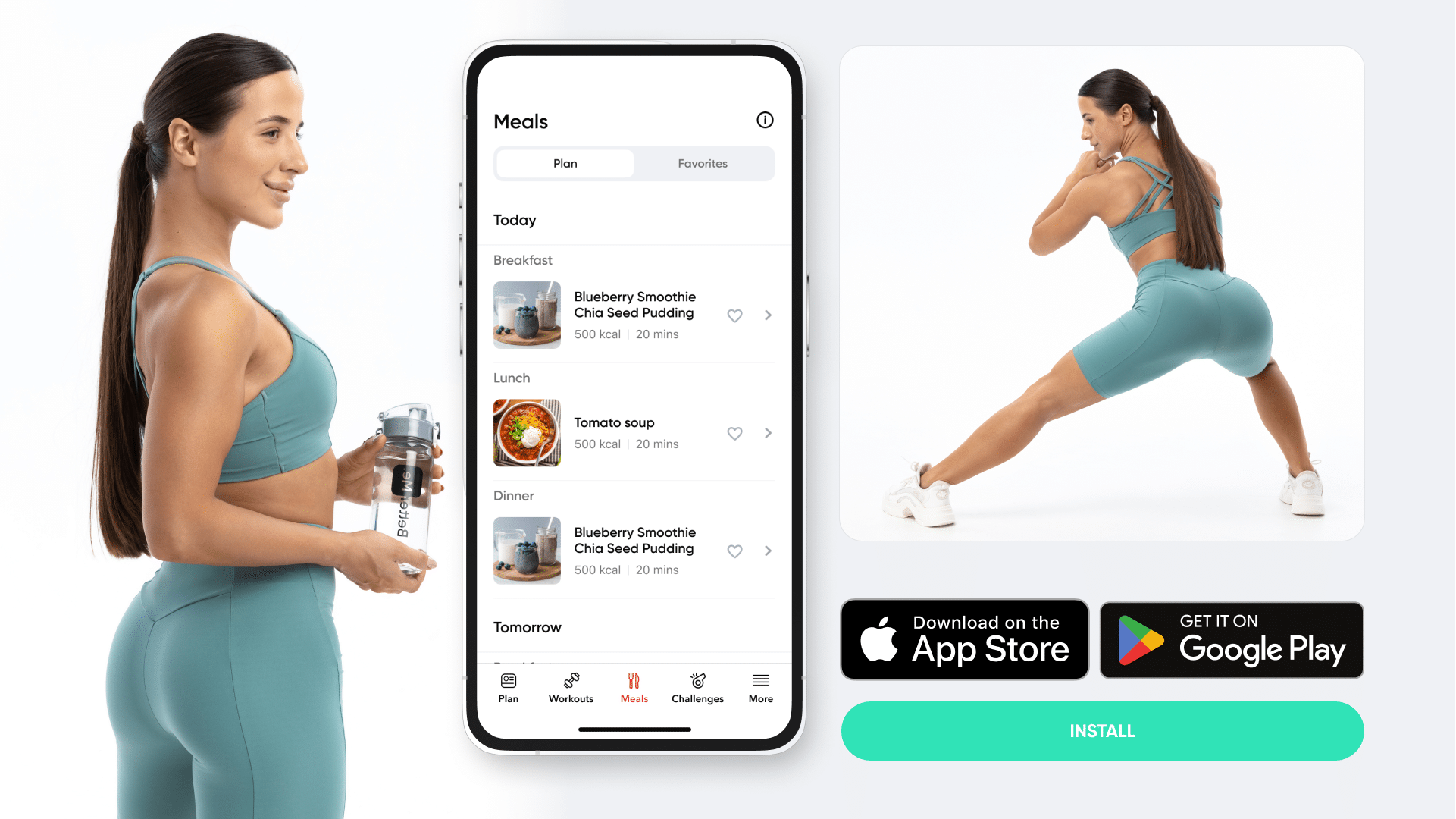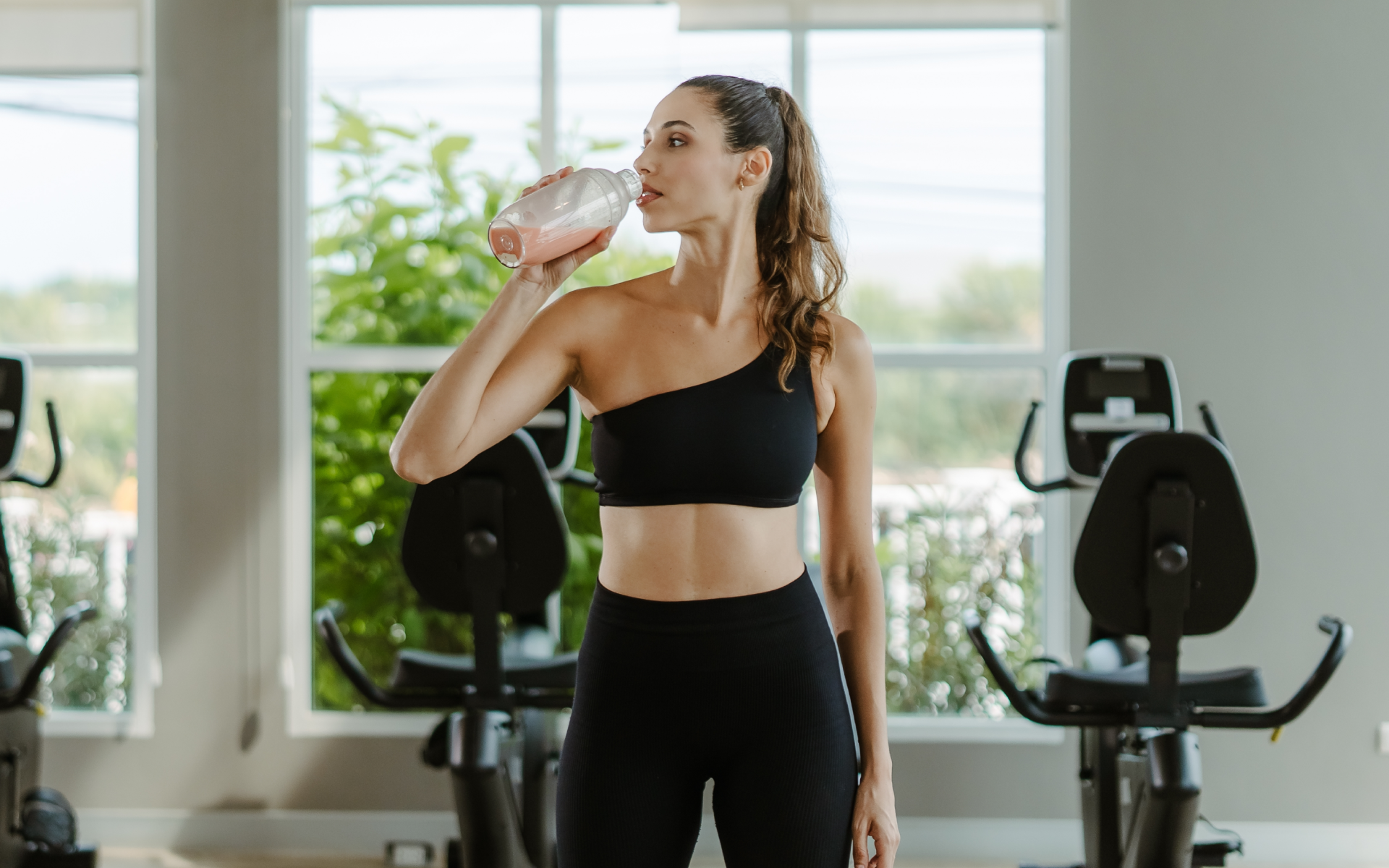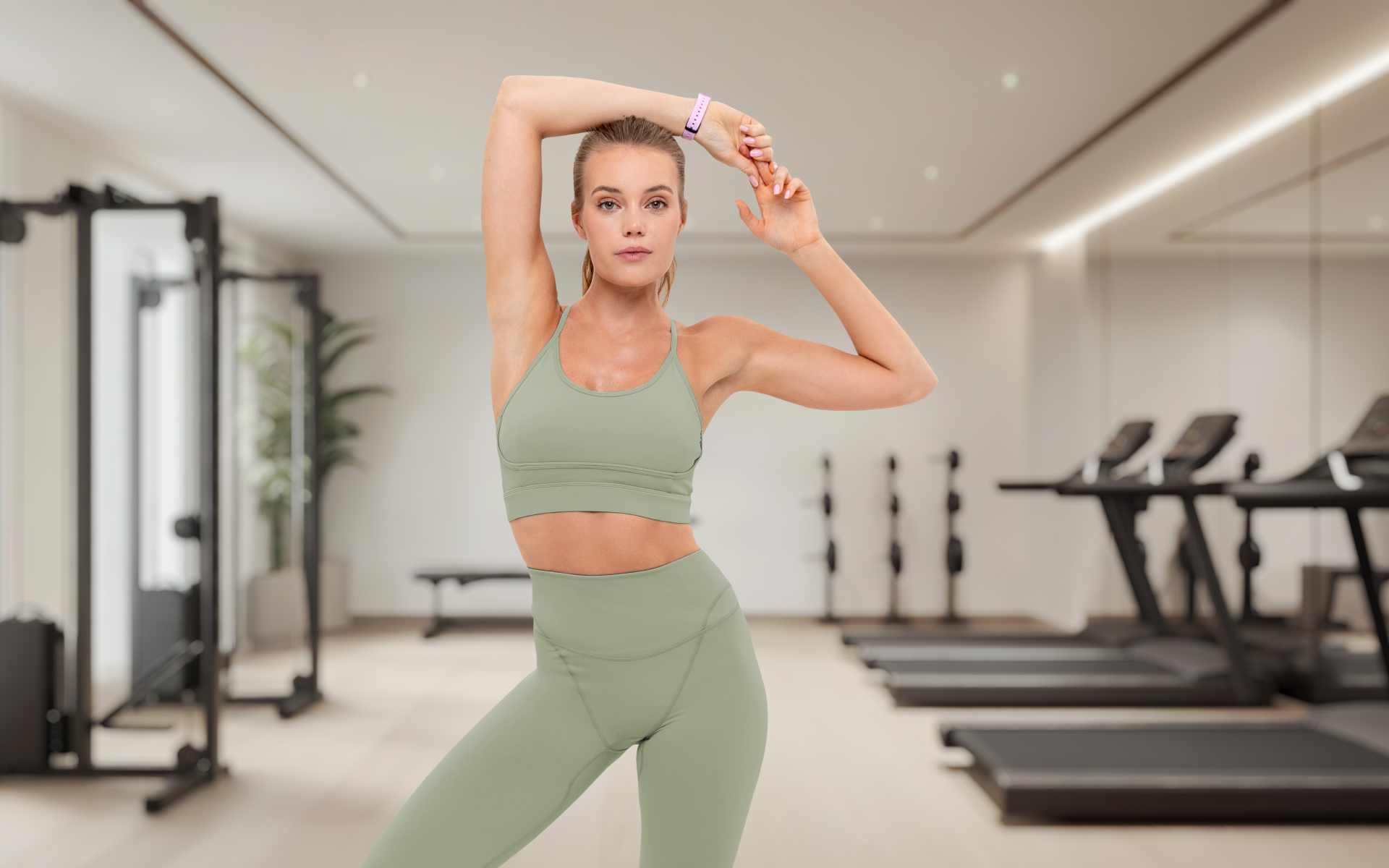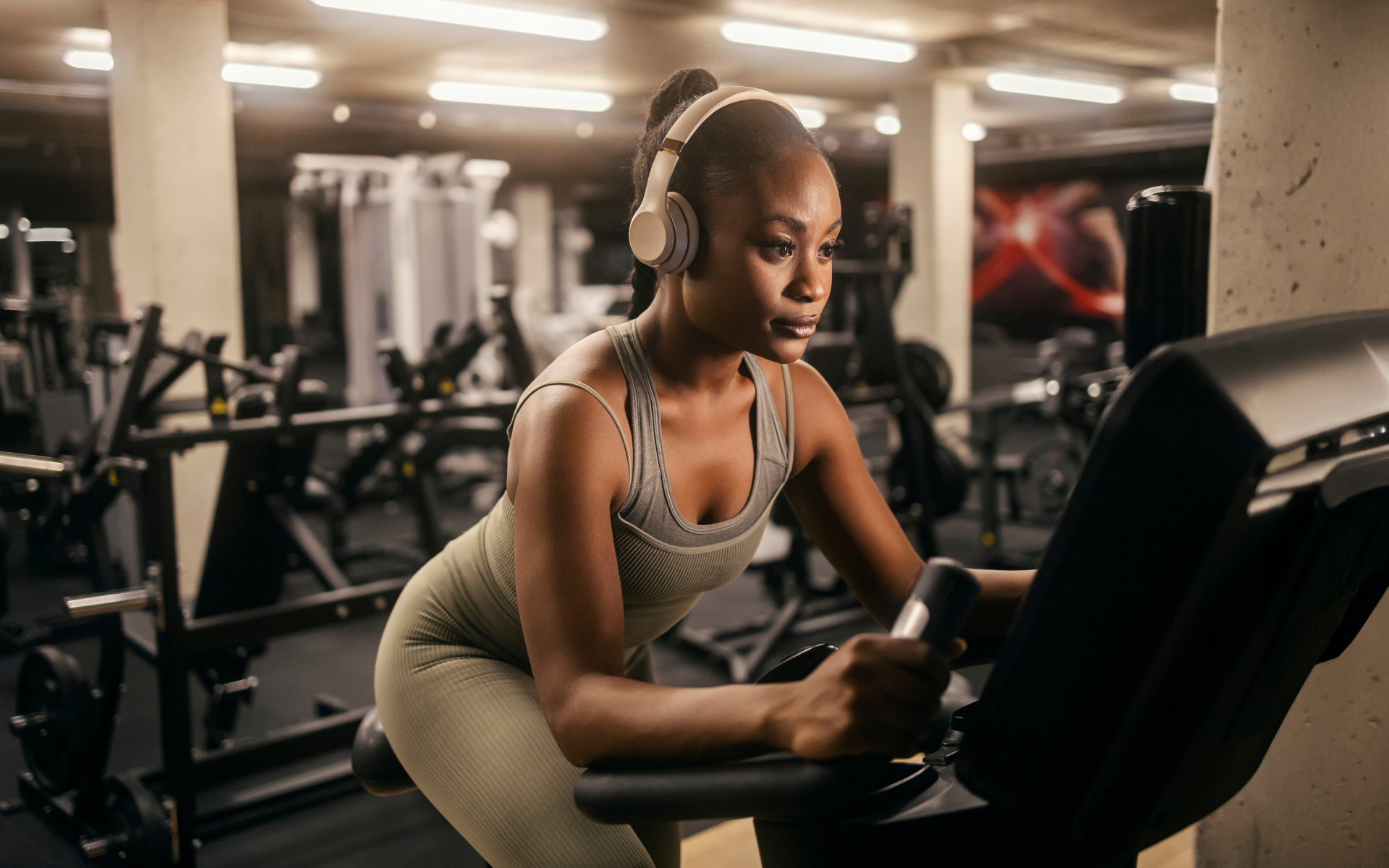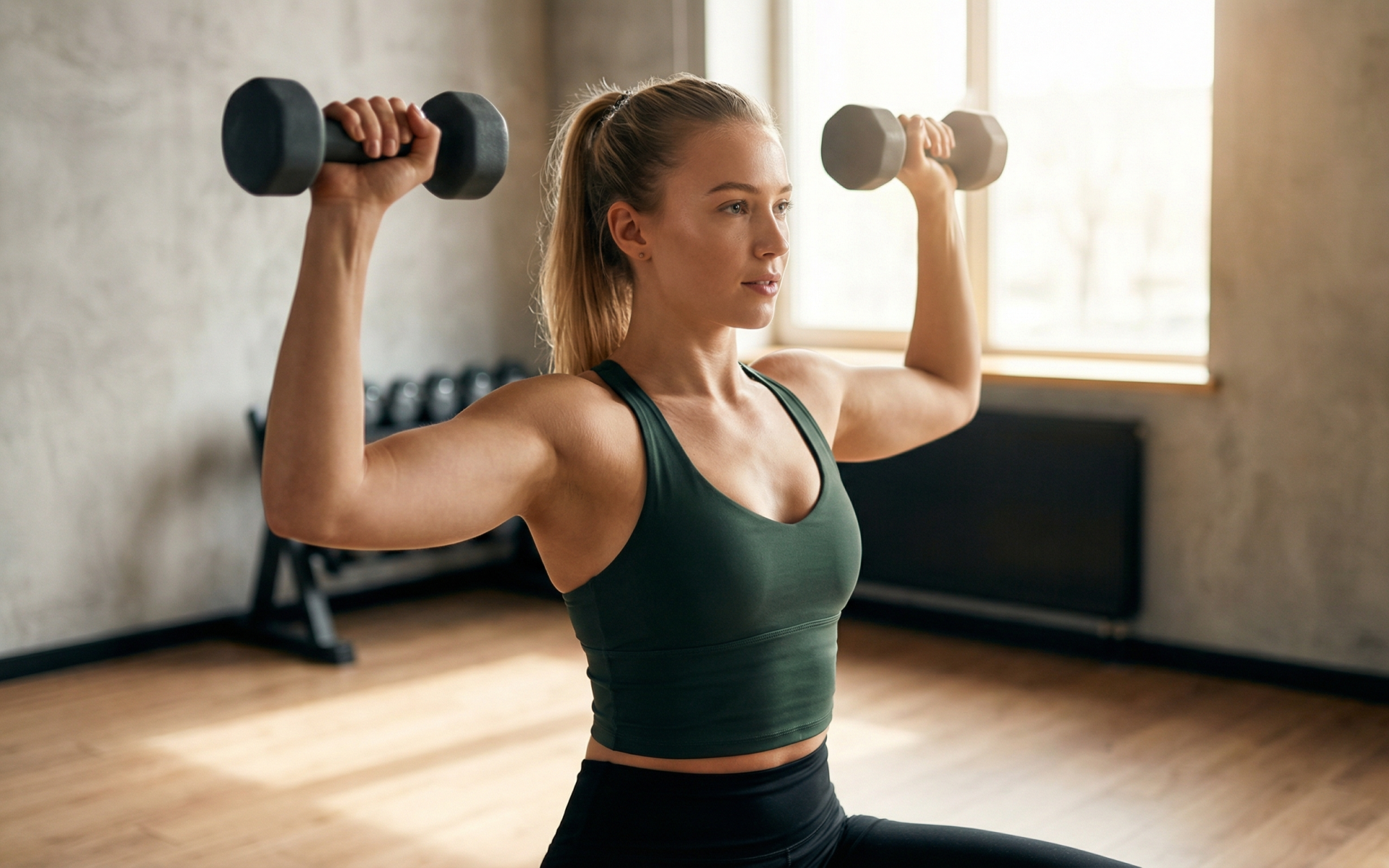Physical activity for seniors is recommended as a means of maintaining good health and preventing age-related conditions such as heart disease, stroke, Type 2 diabetes, and osteoporosis (14).
However, it’s important to choose an activity that is safe and effective, especially for those who may be new to exercise or have existing health concerns.
Barre fitness classes have become increasingly popular in recent years, and many seniors are wondering if this type of exercise is right for them.
As a hybrid workout combining elements of ballet, Pilates, and yoga, barre is a low-impact activity that can be modified to meet the needs of any fitness level.
Here’s what you need to know about barre fitness classes and whether they are safe and effective for seniors.
What is Barre?
In 1959, German ballerina Lotte Berk developed a method of exercise that combined ballet, yoga, and Pilates principles to help rehabilitating dancers regain strength and flexibility after injury (3).
This method, known as the Lotte Berk Method, eventually made its way to the United States in the 1970s and inspired the creation of barre fitness classes as they are known today.
Barre fitness classes typically last for 45 to 60 minutes. They have several distinctive characteristics and goals, based on their constituent parts:
- Ballet: The graceful, flowing movements of ballet help to improve posture and balance.
- Yoga: The focus on deep breathing and mindful movement in yoga can help to reduce stress levels and increase mind-body awareness.
- Pilates: Pilates exercises build core strength, improve muscular endurance, and promote proper posture and alignment.
The goal of barre fitness classes is to help participants achieve a long, lean, and toned physique without bulk. Classes often make use of props such as yoga mats, resistance bands, hand weights, and balls.
Find more indoor exercises to try in our Indoor Walking Workout article.
How Can Seniors Benefit From Barre?
There are many potential benefits of barre fitness classes for seniors, including:
Preservation of Lean Muscle
Sarcopenia (age-related muscle loss) is a natural process that begins around age 30 (18). After the age of 50, sarcopenia can accelerate, leading to a decline in strength, mobility, and balance. This can increase the risk of falls and fractures (23).
Barre fitness classes can help seniors to preserve lean muscle mass and reduce the effects of sarcopenia. The low-impact nature of barre means that it is an ideal form of exercise for those with joint pain or other mobility concerns (22).
Improved Bone Density
Osteoporosis is a condition characterized by low bone density and a high risk of fractures. According to the National Osteoporosis Foundation, one in two women and one in four men over age 50 will develop osteoporosis in their lifetime (2).
Barre fitness classes can help to improve bone density and reduce the risk of osteoporosis. The weight-bearing nature of barre exercises helps to stimulate bone growth, while the focus on proper alignment and posture helps reduce the risk of falls and fractures (25).
Lean and toned up body isn’t just a far-fetched fantasy. Check out the BetterMe app and watch it propel your weight loss journey into high gear!
Better Balance and Coordination
As we age, our balance and coordination often decline. This can lead to a higher risk of falls and injuries (10).
Barre fitness classes can help seniors to improve their balance and coordination. The slow, controlled movements of barre exercises help train the body’s proprioceptive system, which is responsible for balance and coordination (16).
Improved Strength
Independence in activities of daily living (ADLs) such as dressing, bathing, and grooming often depends on strength (1). As we age, our muscle mass and strength naturally decline.
Barre fitness classes can help seniors improve their strength and maintain their independence. The resistance-based exercises in barre help build muscle, while the focus on proper form and alignment helps prevent injuries (26).
Improved Flexibility
Flexibility is the range of motion around a joint. It often declines with age, which can lead to stiffness, pain, and a loss of mobility (11). Maintaining good flexibility and range of motion is important for seniors as it can help to prevent falls and injuries.
Barre fitness classes can help seniors improve their flexibility. The stretching and lengthening exercises in barre help increase the range of motion and improve flexibility (12).
Weight Management
Obesity is a risk factor for many chronic diseases, including heart disease, stroke, and type 2 diabetes (19). As we age, our metabolism slows and we tend to lose muscle mass, both of which can lead to weight gain (4).
Barre fitness classes can help seniors maintain a healthy weight. Both yoga and pilates are beneficial in weight management (28). Depending on the intensity level, barre can help burn calories and build lean muscle mass.
The focus on proper form and alignment can also help prevent injuries caused by excess weight.
Reduced stress levels
Chronic stress can lead to a variety of health problems, including high blood pressure, heart disease, and anxiety (27). Seniors are especially susceptible to the effects of stress as they often deal with age-related changes such as retirement, declining health, and the loss of loved ones.
Barre fitness classes can help seniors reduce stress levels. The mind-body connection fostered by barre can help promote relaxation and a sense of well-being (8).
The low-impact nature of barre can also be helpful for those who are dealing with pain or other mobility concerns.
Improved Mental Sharpness
Cognitive decline is a normal part of aging, but it can be accelerated by conditions such as Alzheimer’s disease and dementia. A sedentary lifestyle can also contribute to cognitive decline because it leads to a reduction in brain size and connections (29).
Barre fitness classes can help seniors improve their mental sharpness. The combination of aerobic activity, resistance training, and mind-body focus can help stimulate the brain and delay cognitive decline (5).
Increased Energy Levels
As we age, our energy levels often decline. This can be due to a variety of factors, including reduced muscle mass, declining hormone levels, and sleep problems (13).
Barre fitness classes can help seniors increase their energy levels. The aerobic and resistance-based exercises in barre can help build muscle and improve cardiovascular fitness, both of which can lead to increased energy levels (21).
Generally, exercise helps reduce stress and promote relaxation, which can lead to improved sleep and more energy during the day (8).
Read more: 4 Best Core Exercises for Beginners: 16 Core Workouts for Men, Women, and Seniors
Criticisms of Barre
Although barre fitness classes offer many benefits for seniors, there are some criticisms of the method.
Doesn’t Build Functional Strength
Functional strength is the type of strength that’s needed for everyday activities such as carrying groceries or getting in and out of a car (17). Because barre classes focus on small, isolated movements, some people argue that they don’t build functional strength.
The movements in a barre class are only used to tone the muscles, not to prepare them for functional tasks. Compound movements common in other types of exercise, such as squats and lunges, are more likely to build functional strength.
Low Energy Demands
Barre classes tend to have low energy demands, which means that they don’t burn a lot of calories. For seniors who are trying to lose weight or maintain a healthy weight, barre might not be the best option.
Other types of exercise, such as walking or jogging, are more likely to help with weight loss because they have a higher energy demand.
Neglects Cardiovascular Fitness
A typical barre class raises participants’ heart rates to slightly above 40% of their maximum heart rate, which means that it’s not a very strenuous workout (24). For seniors who are trying to improve their cardiovascular fitness, barre might not be the best option.
Other types of exercise, such as walking or biking, are more likely to help with cardiovascular fitness because they have a higher energy demand.
Not Suitable for Seniors with Joint Problems
Barre classes involve a lot of standing and some movements that put pressure on the joints, such as pliés. The ballet-like posture that requires the chest to be lifted and the shoulders to be drawn down can also aggravate joint problems such as shoulder impingement.
The lower back can also be strained by some of the movements in a barre class. For seniors with joint problems, another type of exercise might be more suitable.
Other types of exercise, such as swimming or water aerobics, are less likely to aggravate joint problems because they involve low-impact movements (7).
Only For Women
Barre fitness classes are often marketed as being for women only. However, there’s no reason why men can’t take barre classes and benefit from them.
Many men do take barre classes and find them to be helpful for their fitness goals.
What to Expect in a Barre Class
If you’re thinking about taking a barre class, it’s important to know what to expect. Barre classes typically last for 45 minutes to an hour. They usually begin with a warm-up that includes gentle stretching and movements to get the body ready for exercise.
The main part of the class is focused on a series of small, isometric movements that target the muscles in the arms, legs, and core. The class ends with a cool-down and some gentle stretches.
Barre classes can be challenging, but they’re also meant to be fun. The music in a barre class is often upbeat and motivating. The atmosphere in a barre studio is usually supportive and friendly.
What to Wear to a Barre Class
There’s no dress code for barre, but it’s important to wear comfortable clothing that you can move freely in. Leggings or yoga pants and a tank top or t-shirt are typically worn.
You want snug-fitting, but not tight, clothing so that the instructor can see your form and alignment. You’ll also want to wear socks that have a grip on the bottom. This will help you avoid slipping during the class.
Shoes are not typically worn in a barre class, but if you have joint problems, you may want to wear sneakers with low heels for support.
For those who like an all-in-one outfit, a squat-proof studio bodysuit can keep everything secure, while a supportive full-length jumpsuit provides extra coverage and confidence throughout the class.
Barre Class Etiquette
There are a few things to keep in mind when you’re taking a barre class.
First, arrive on time so that you can get settled and be ready to start when the class begins.
Second, stay mentally focused throughout the class. This means putting away your phone and not chatting with other students.
Third, listen to your body and don’t push yourself too hard. If a movement feels too challenging or causes pain, modify it or skip it altogether. Work with the instructor before class to come up with a modification that will work for you.
Finally, have fun and enjoy the class!
Looking for a way to break the vicious cycle of weight loss and tone up all the jiggly parts? Watch the extra pounds fly off and your muscles firm up with the BetterMe app!
Can I Lose Weight With Barre Class?
Yes, you can lose weight with barre classes. Barre class is a low-impact, high-intensity workout that combines elements of ballet, yoga, and Pilates. It focuses on small, repetitive movements and is known for building long, lean muscles and improving flexibility.
Barre class can help you lose weight in several ways:
- Calorie Burning: Barre classes incorporate high-intensity intervals and strength training, which can help burn a significant amount of calories (9).
- Muscle Building: The exercises focus on small, controlled movements that build lean muscle mass. More muscle increases your resting metabolic rate, allowing you to burn more calories even when you’re not working out (15).
- Improved Metabolism: The combination of cardio and strength training in barre can boost your metabolism (6).
- Flexibility and Core Strength: These workouts improve flexibility, balance, and core strength, which can enhance overall physical performance and reduce the risk of injury when engaging in other forms of exercise (30).
- Consistency: Many people find barre classes enjoyable and engaging, making it easier to stick to a regular workout routine, which is essential for weight loss.
Exercise alone may not be enough for significant weight loss. A balanced, calorie-controlled diet is crucial. Results can vary based on individual factors such as age, sex, starting weight, and overall fitness level.
FAQs
Is Barre Hard On The Knees?
Barre workouts are generally considered low-impact, making them relatively easy on the joints, including the knees. These exercises can actually be beneficial for individuals with knee issues because they focus on small, controlled movements that strengthen and stabilize muscles around the knee joint (31).
However, as with any exercise routine, improper form or overexertion can lead to knee pain or exacerbate existing issues. It’s crucial to maintain proper alignment and listen to your body to avoid injury. Some tips for protecting your knees during barre workouts include:
- Always warm up before starting
- Focus on proper form and alignment
- Avoid locking your knees during exercises
- Use modifications when necessary
If you have any pre-existing knee conditions, it’s advisable to consult with a healthcare professional before starting a new workout regimen.
Is Barre Good for Over 60?
Barre offers numerous physical benefits that can greatly enhance the well-being of individuals over 60. It provides an effective way to stay active, improve overall health, and maintain independence.
Here are several reasons why:
- Low-Impact Exercise: Barre is a low-impact workout that reduces the risk of joint and muscle strain, making it ideal for older adults who may have concerns about high-impact activities (31).
- Improves Flexibility: The stretching and controlled movements in barre exercises can help improve flexibility, which is essential for maintaining mobility as you age (31).
- Enhances Balance and Stability: Many barre exercises focus on balance and stability, which are critical for preventing falls – a common concern for older adults (31).
- Builds Strength: Barre incorporates resistance training using body weight, small weights, or resistance bands, which can help build and maintain muscle strength (31).
- Boosts Bone Health: Weight-bearing exercises in barre can contribute to bone density, helping to combat osteoporosis and other bone-related issues (31).
- Promotes Posture: The focus on core strength and alignment can improve posture, reducing back pain and enhancing overall bodily function (31).
- Adaptable Intensity: Barre workouts can be easily modified to suit different fitness levels, allowing individuals to progress at their own pace.
Before starting any new exercise regimen, especially if there are pre-existing health conditions, it’s important to consult with a healthcare provider. Taking classes from certified instructors who can offer modifications and ensure correct form is crucial to avoid injury.
Does Barre Help With Belly Fat?
Barre class can contribute to weight loss and help tone muscles, but it’s not a targeted workout for losing belly fat specifically. Losing fat in any area of the body requires creating a calorie deficit through exercise and diet.
Some ways that barre class can indirectly help with belly fat loss include::
Calorie Burning: Barre classes are a form of high-intensity, low-impact exercise that combines elements of ballet, Pilates, and yoga. These workouts can effectively burn calories, which is essential for overall fat loss, including belly fat (9).
Muscle Building: Barre exercises often focus on small, isometric movements that work the muscles to fatigue. This helps in building lean muscle mass. Increased muscle mass can boost your metabolism, leading to more calories being burned at rest (15).
Core Strengthening: Many barre exercises specifically target the core muscles, including the abdominals and obliques. Strengthening these muscles can improve overall muscle tone and create a firmer appearance around the midsection (30).
Increased Flexibility and Posture: Improved flexibility and better posture from regular barre practice can make you appear slimmer and more toned, even if you haven’t lost a significant amount of weight (31).
While barre can strengthen core muscles, it won’t specifically reduce belly fat without overall body fat reduction. Since exercise alone may not be sufficient for significant fat loss, it’s crucial to also maintain a healthy, balanced diet to support your weight loss goals (20).
Is Barre Harder Than Yoga?
Barre and yoga are fundamentally different and cannot be compared in terms of difficulty.
The difficulty of barre versus yoga is subjective and depends on various factors, including individual fitness levels, specific goals, and personal preferences. Here’s a comparison to help you understand the differences and challenges of each:
Barre
- Focus: Primarily targets muscles using small, controlled movements, often incorporating elements of ballet, Pilates, and strength training.
- Intensity: Typically high-intensity due to the repetitive, isometric movements which can cause muscle fatigue quickly.
- Flexibility & Strength: Emphasizes building strength, endurance, and improving posture; flexibility is also enhanced to some extent.
- Cardiovascular Component: Some classes incorporate cardio intervals, making it a more comprehensive workout.
- Experience Level: Can be challenging for beginners due to the need for precise form and the intensity of the movements.
Yoga
- Focus: Centers on flexibility, balance, and mind-body connection through various poses and sequences.
- Intensity: Varies widely depending on the style (e.g., Hatha, Vinyasa, Ashtanga). Some styles are gentle and relaxing, while others are vigorous and demanding.
- Flexibility & Balance: Strong emphasis on improving flexibility, balance, and mental focus.
- Mindfulness Component: Integrates breathing techniques and meditation, promoting relaxation and reducing stress.
- Experience Level: Accessible to all fitness levels, with modifications available for both beginners and advanced practitioners.
Key Differences
- Muscular Endurance: Barre tends to focus more on muscular endurance through repetitive movements, whereas yoga combines strength with flexibility.
- Cardio: Barre classes often have a stronger cardio component compared to most yoga classes.
- Mental Focus: Yoga places a significant emphasis on mindfulness and breath control, which is less central in barre workouts.
If you prefer intense, muscle-focused workouts, you might find barre more challenging. If you’re looking for a balance between physical and mental exertion, certain styles of yoga could be more demanding. It can be beneficial to try both and see which aligns best with your fitness goals and enjoyment.
The Bottom Line
Despite the criticisms, barre fitness classes offer many benefits for seniors. The low-impact, mind-body nature of barre can be helpful for those dealing with pain or other mobility concerns.
And, the combination of aerobic activity, resistance training, and mind-body focus can help stimulate the brain and delay cognitive decline. If you’re a senior who’s looking for a new fitness challenge, consider giving barre a try.
DISCLAIMER:
This article is intended for general informational purposes only and does not serve to address individual circumstances. It is not a substitute for professional advice or help and should not be relied on for making any kind of decision-making. Any action taken as a direct or indirect result of the information in this article is entirely at your own risk and is your sole responsibility.
BetterMe, its content staff, and its medical advisors accept no responsibility for inaccuracies, errors, misstatements, inconsistencies, or omissions and specifically disclaim any liability, loss or risk, personal, professional or otherwise, which may be incurred as a consequence, directly or indirectly, of the use and/or application of any content.
You should always seek the advice of your physician or other qualified health provider with any questions you may have regarding a medical condition or your specific situation. Never disregard professional medical advice or delay seeking it because of BetterMe content. If you suspect or think you may have a medical emergency, call your doctor.
SOURCES:
- Activities of Daily Living (2022, ncbi.nlm.nih.gov)
- An overview and management of osteoporosis (2016, ncbi.nlm.nih.gov)
- Behind the Barre. the history and evolution of the fitness phenomenon called “barre” (2018, medium.com)
- Body composition changes with aging: The cause or the result of alterations in metabolic rate and macronutrient oxidation? (2009, ncbi.nlm.nih.gov)
- Effects of Aerobic and Resistance Exercise Interventions on Cognitive and Physiologic Adaptations for Older Adults with Mild Cognitive Impairment: A Systematic Review and Meta-Analysis of Randomized Control Trials (2020, mdpi.com)
- Effects of Aerobic Training, Resistance Training, or Both on Percentage Body Fat and Cardiometabolic Risk Markers in Obese Adolescents (2024,jamanetwork.com)
- Effects of Aquatic Exercises for Patients with Osteoarthritis: Systematic Review with Meta-Analysis (2022, mdpi.com)
- Exercise for Mental Health (2006, ncbi.nlm.nih.gov)
- How Barre Classes Can Help You Lose Weight (n,d,thehotyogaspot.com)
- Falls and Fall Prevention In The Elderly (2021, ncbi.nlm.nih.gov)
- Flexibility (n.d., physio-pedia.com)
- Flexibility Exercise (Stretching) (2018, heart.org)
- Hormonal and Metabolic Changes of Aging and the Influence of Lifestyle Modifications (2021, ncbi.nlm.nih.gov)
- International Exercise Recommendations in Older Adults (ICFSR): Expert Consensus Guidelines (2021, link.springer.com)
- Increasing muscle mass to improve metabolism (2013,nih.gov)
- Movement-Based Therapies in Rehabilitation (2020, ncbi.nlm.nih.gov)
- Muscle Strength Grading (2022, ncbi.nlm.nih.gov)
- Muscle tissue changes with aging (2010, ncbi.nlm.nih.gov)
- Obesity: Risk factors, complications, and strategies for sustainable long‐term weight management (2017, ncbi.nlm.nih.gov)
- Optimal Diet Strategies for Weight Loss and Weight Loss Maintenance (2021,nih.gov)
- Physical activity and feelings of energy and fatigue: epidemiological evidence (2006, pubmed.ncbi.nlm.nih.gov)
- Role of exercise in age-related sarcopenia (2018, ncbi.nlm.nih.gov)
- Sarcopenia in older adults (2014, ncbi.nlm.nih.gov)
- Target Heart Rates Chart (2021, heart.org)
- The Effectiveness of Physical Exercise on Bone Density in Osteoporotic Patients (2018, hindawi.com)
- The effect of resistance training on health-related quality of life in older adults: Systematic review and meta-analysis (2019, ncbi.nlm.nih.gov)
- The effects of chronic stress on health: new insights into the molecular mechanisms of brain–body communication (2015, ncbi.nlm.nih.gov)
- The effects of Pilates and yoga participant’s on engagement in functional movement and individual health level (2019, ncbi.nlm.nih.gov)
- The Impact of Age on Cognition (2015, ncbi.nlm.nih.gov)
- The real-world benefits of strengthening your core (2012,harvard.edu)
- What is Barre? The Top 10 Benefits of Barre Workouts (2023,ohow.com)
